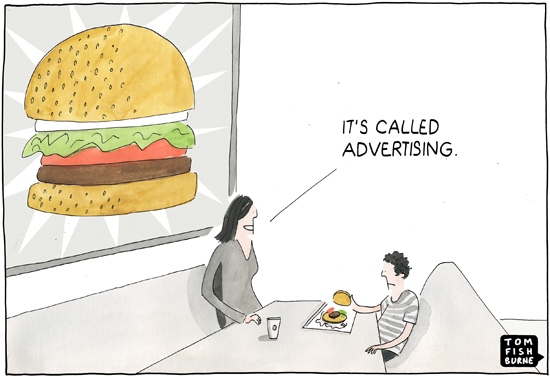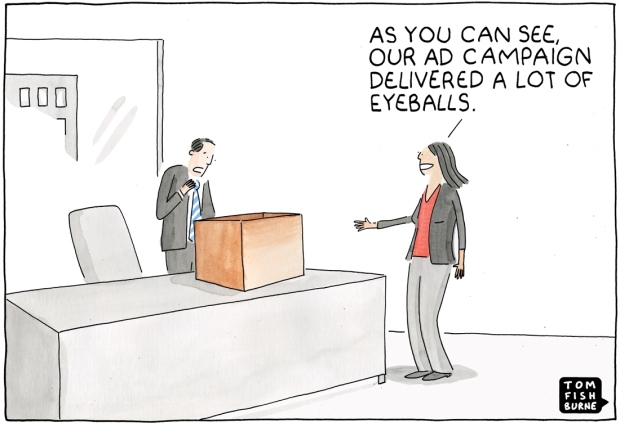
You get out of bed, stretch, and make some coffee.
You settle in on the couch and start your work day – in your pajamas.
(You’re a professional blogger, so nobody gets to tell you what to wear, well no one tells me what to wear, and I’m dressed in shorts and a long tunic).
You open your laptop, check your email, and see dozens of notifications: “You’ve Been Issued a Payment.”
Overnight, you’ve made hundreds, maybe thousands of dollars/ rupees depending on your account.
Money literally appears in your bank account while you sleep.
And what’s the secret to this coffee-swigging, pajama-wearing lifestyle?
Advertising, of course!
Those little ads waiting patiently in your sidebar, to earn you money while you whip up your next mochaccino, well, prepare yourself for a shock… because it aint all magical, there are rules in place, there’s a story behind this all… but first…..
What is Advertising?

Advertising is specifically part of the “outbound” marketing activities, or activities geared to communicate out to the market, for example, promotions and public relations. (“Inbound” marketing activities are geared to communicate in from the market, and includes, for example, market research to learn about customers’ needs and wants.)
How much text should you include? What dimensions should your images and videos be? What’s the difference between a desktop News Feed ad, a mobile News Feed ad, a right column ad, and an Instagram ad? How does the auction and billing system work?
What Am I Doing?!!!!
Consumer sentiment for a brand is like a fire. During the good times, it’s a roaring campfire, emanating heat and light and making everybody around it happy, it reminds you of songs like ‘A Candle in the wind’.
During the bad times, it’s the flickering flame of a candle, barely shining through the darkness. And during the really bad times, the fire is roaring once again … but only because everything is burning to the ground, think forest fires level of epic disasters.
The Golden Age of Advertising, that twenty-year spell running through the fifties and sixties, changed how we market everything, pushing beyond merely being clever or descriptive to thinking through how the audience interacts with an ad, and how empirical research can drive its development.
There are several ways to go about advertising, using Direct Mail (this includes mailings directly to your customer), Mailing Lists (it’s useful to have lists of people who are likely to buy your product), Signs and Displays, Classifieds in Newspapers and Magazines, Advertising on Radio and T.V., Telemarketing, Online Advertising and Promotions and all additional forms of digital marketing.
What you really need is an advertising plan…
An advertising plan usually includes what target markets you want to reach, what features and benefits you want to convey to them, how you will convey it to them (this is often called your advertising campaign), who is responsible to carry the various activities in the plan and how much money is budgeted for this effort.
Successful advertising depends very much on knowing the preferred methods and styles of communications of each of the target markets that you want to reach with your ads.
A media plan and calendar can be very useful, which specifies what advertising methods are used and when.
For each product or service, carefully consider:
- What target markets are you trying to reach with your ads?
- What would you like each target market to think and perceive about your products (this should be in terms of benefits to them, not you)? Realize that each target market might be different.
- How can you get that target market to think and perceive that, that is, what message do you need to convey?
- What communications media does that target market see or prefer the most? Consider TV, radio, newsletters, classifieds, displays/ signs, posters, word of mouth, press releases, direct mail, special events, brochures, neighborhood newsletters, etc.
- What media is most practical for you to use in terms of access and affordability for that target market (the amount spent on advertising is often based on the revenue expected from the product or service, that is, the sales forecast)? Use that preferred media to convey the message(s).
- Who will communicate the messages in the most appropriate media to that target market?
And now though Advertising is a godsend trust me, you have no idea, how awesome it is to let the world know how brilliant you are, there are several myths out there that would totally make you balk.
Here are a few myths that I am totally going to help you to never underestimate:
Myth #1: If a Product Isn’t Selling Well, Advertise It.

Advertising – even the most clever, funniest, most expensive advertising – can’t make people buy something they don’t want. It can create awareness of a product; it can even get people to come see the product, but if people know that they don’t like or need the product, advertising won’t help sell it. In fact, advertising can backfire: You could end up drawing attention to the fact that you carry unwanted goods.
Why not advertise the best items, the product leaders that will draw people in. And, maybe some of the older merchandise will be seen and picked up at no further expense to the business. It’s not magic, it’s art!
Myth #2: Advertising Can Create Sales.

Many people think that advertising is the same thing as marketing. Or that advertising is the same as selling. Or that they are all the same thing.
Marketing encompasses all the activities that are entailed in moving your product from creation to purchase, from research to packaging. Marketing looks at product, price, promotion and placement factors; you will hear these referred to as the “4 Ps of Marketing.”
Advertising is one way to teach people about your product. You can use it to communicate what a product is, how it will fill a need or enhance life, how much it costs and where the buyer can get it. You can use it to differentiate a product or develop an image.
But it’s good marketing – the overall strategy that might include advertising – that can (and should) produce in sales. Good advertising can create traffic, interest or an image. It can even position your product in relation to the competition. But, by itself, advertising can’t create a sale, duh!
Myth #3: Advertising Can Manipulate People to Buy.

That’s like saying companies like Nokia, or Samsung are evil villains out to get you with hypnotism. It doesn’t really exist.
If this myth was true, then some ad executive somewhere would have the secret to success. If a secret to success exists, why do 80 percent of new products fail? Why do established products drop from sight?
People have needs for products and services, but they have choices on how to fill those needs. Their decision to buy your product will be based upon their belief that what you offer satisfies their need. It will also be based upon their readiness to buy.
It’s not like people out there are conscientious. Most people are just plain impulsive… so one can never guarantee 100% success.
So in short, we’ve established that a good advertising campaign can yield the kind of results you wouldn’t bet on if you are still stuck in the bartering part of the past. And myths on advertising can cause more harm than good, and most importantly, money brings all the big boys to the yard, so go out there and let the world know, exactly who you are!
For More Detail Go To Video Link – What Is Advertising
